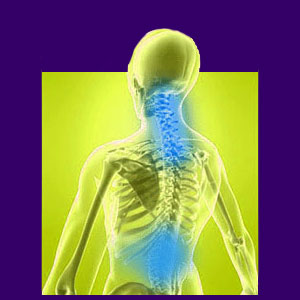
Back and neck pain are also known as the torturous twins to many patients; myself included. Pain in multiple regions of the spine is a horror to endure and often results in full or partial disability. I spent more than 2 decades of my life suffering with lumbar pain and sciatica. Now, I also have some very serious cervical issues which have caused me an ever-growing variety of neck pain symptoms, as well. I can truly understand the misery of back and neck ache, since I live the nightmare every day.
Neck and back pain falls into 3 basic categories: Pain that resolves without treatment, pain that requires treatment and pain that is treatment-resistant.
This discussion centers on combined symptoms that exist in the back and neck together.
Soft Tissue Back and Neck Pain
Many cases of back pain or neck pain do not require professional medical attention, since they only involve minor injury to the soft tissues. Muscular back pain is the most common type of physical symptomatic condition and will usually resolve on its own.
Back muscle pain can be very severe, but is rarely serious in its implications. Most cases of back and neck muscle pain will involve the areas which work closely together, including the lower neck and upper back muscles. Many patients will also have shoulder or upper arm involvement, as well.
Ice and heat combined with mild OTC pain relievers are usually enough to provide a good healing environment.
Studies have proven that patients who do not seek any treatment for common back pain and neck pain demonstrate a faster recovery rate and less chance of developing chronic pain than patients who do seek medical attention. Even though this is a frightening statistic to be sure, I still recommend getting any serious or chronic pain evaluated by a qualified medical doctor as soon as possible.
Skeletal Neck and Back Pain
Spinal sources of pain are usually more significant and may not resolve without professional care. Being that some upper vertebral conditions, such as cervical spinal stenosis, can be dire in their potential effects, it is a must to have any suspected spinal issue diagnosed properly.
Some pain syndromes require medical assistance in order to either correct the causative source of pain or to live comfortably with the most severe of symptoms. Some conditions respond better to traditional medicine and some respond well to complementary or alternative therapies.
Regardless of the methods utilized, treatment should progress from conservative to drastic. Back surgery options should always be held in reserve as last resorts. Sometimes, it might take a few different therapy modalities or care providers to fully heal a stubborn spinal pain syndrome.
Unresolved Back and Neck Symptoms
Some neck and back conditions do not heal regardless of the amount of treatments attempted by the patient. Often, these pain syndromes change or move around in response to therapy, but do not disappear. Patients typically begin a downward spiral and wind up controlled by their severe pain. The usual reason for this to occur is a misdiagnosis of the actual cause of suffering.
The dorsal anatomy is complicated and many structural issues are mistakenly blamed for causing pain when another structural concern is really the source. Disease processes, infectious process and idiopathic contributors can all create back or neck symptoms when the circumstances allow.
Psychosomatic back pain is another possible explanation for chronic neck and back symptoms. It is also the least likely to be correctly diagnosed by a physician. This type of syndrome can last for many years, or even an entire lifetime, without being correctly diagnosed and treated. It is such a shame, since knowledge therapy can work well to resolve these conditions for many patients.
Back and Neck Pain Tips
Do not stress over neck or back pain. Emotional stress aggravates all health concerns and can actually help perpetuate the pain. Assess the situation and determine if treatment is needed. Long lasting pain should always be diagnosed by a doctor. If this chronic pain does not heal in the expected time frame with appropriate treatment, consider the possibility that the diagnosis may be erroneous.
If all else fails and you are puzzled by treatment-resistant pain, it may be time to consider a mindbody causation. There is no shame or shock in this, since psychosomatic pain syndromes are almost universal. The only real variables are the location, severity and duration of the symptoms from person to person.





